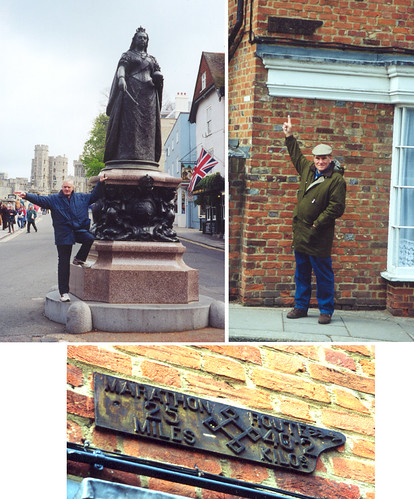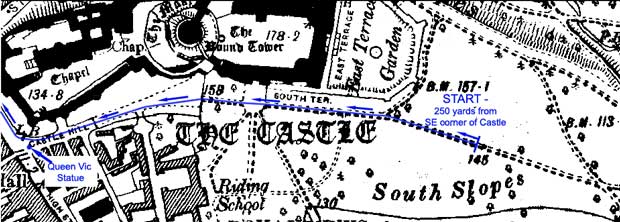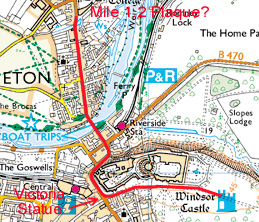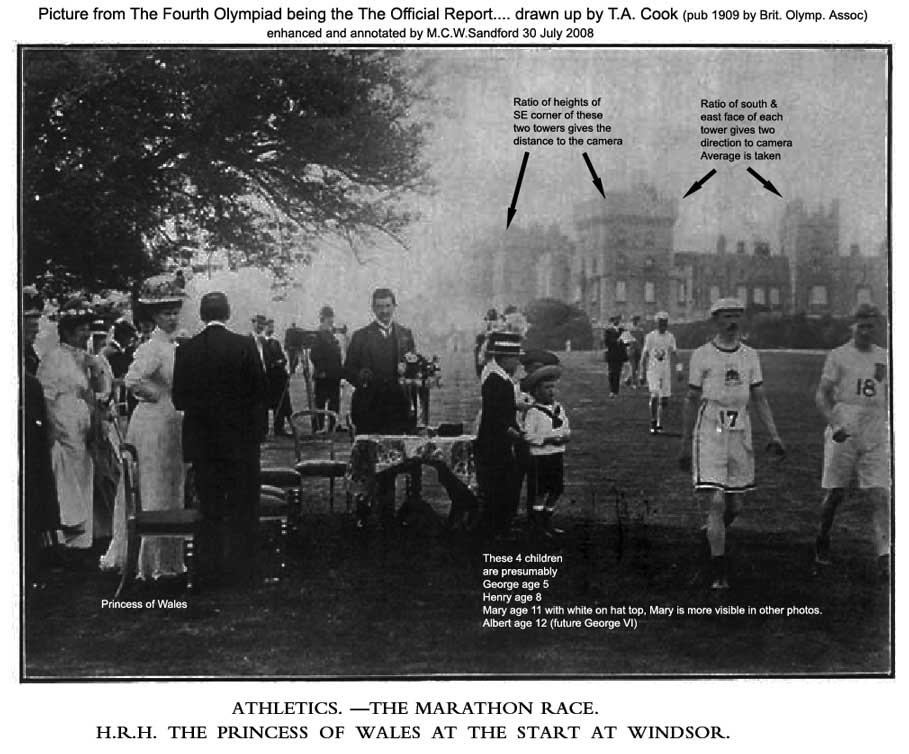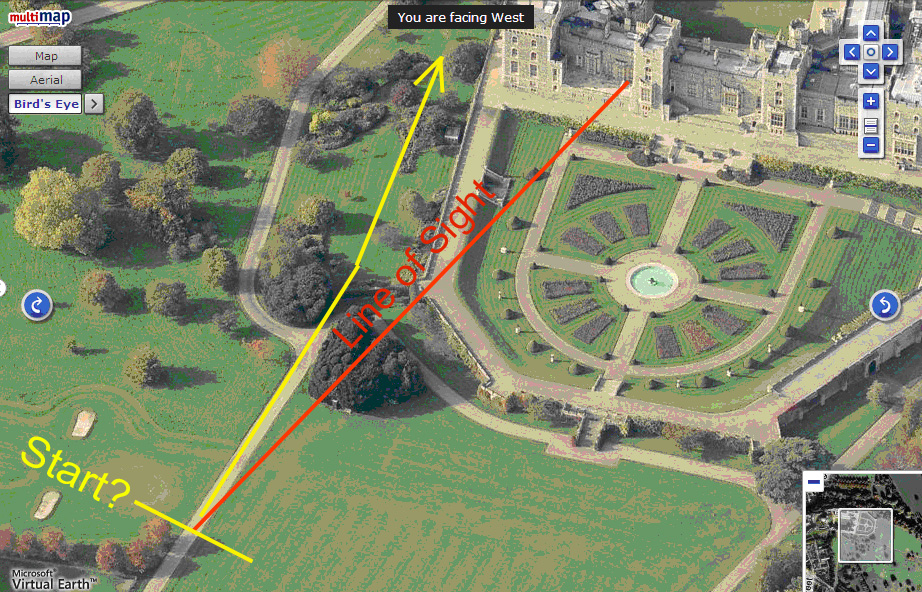The distance of the 1908 Olympic marathon appears to have been established in advance of the race. In The Times of 22 July 1908 the official programme and arrangements planned for the race are reported.
quote:
DISTANCE TABLE OF MARATHON ROUTE
Start Windsor castle, East terrace, 700 yards from Queen Victoria's Statue.
Miles Kilometres
1 = 1.6 Barnespool-Bridge, Eton.
2 = 3.2 Windsor Road about 50 yards past the prince of Wales P.H.
3 = 4.8 Corner of High-street, Slough, and Uxbridge-road.
.... ..... ......
26* = 41.84 Entrance of Stadium, QQ. RR. SS.
26 miles 385yards = 42.263 kilometres. Full distance
* A rocket or gun will be fired at these three points.
The metrical distances are approximate.
The distance tablets have been arranged the reverse of the above, thus the 25th mile from the stadium is at Barnespool-Bridge, Eton.
TIME TABLE
.................
ENTRIES
.................
RULES OF THE RACE
1. The marathon Race of about 40 kilometres will be run on a course marked out on public roads by the Amateur Athletic Association and will finish on the running track of the stadium, where part of one lap will be run.
...........................
DESCRIPTION OF THE ROUTE
The race starts from Windsor Castle, near East Terrace (700 yards from Queen Victoria's Statue), .............
I have always been a bit curious about the stories of how the distance came to be settled. What seems clear from the above account published in the paper 2 days before the event, is that
the 26 miles 385 yards was known beforehand, and there was certainly no last minute adjustment of the start so that members of the Royal Family, ill or not, could view it from their windows. Indeed, in The Times on 12 June 1908 it already says that the Marathon Race of "about 26 miles" was to be run from Windsor to the Stadium on Friday, July 24.
On 19 April 1998 I measured the distance from The Queen Victoria Statue in Windsor to Barnes Pool Bridge in Eton. It came to 1030 yards (with no SCPF since that was not in use then). The above account says the start was 700 yards from the Queen Victoria Statue, so that makes Barnes Pool Bridge to be 1730 yards from the start. This is 30 yards less than 1 mile. But there are several yards of uncertainty at the large statue (I used as a reference a drain lying on the SPR to one side of the statue) and the bridge was over 10 yards long, I used as a reference a plate saying AM Fowler CE. On a house immediately after crossing the bridge there is a plate saying 25 miles with an arrow pointing towards the finish. On investigating the history of the plate I found that it had been on this house belonging to Eton college and had been removed and put in a store room during repairs/decorations to the brickwork. It had been discovered in the storeroom and had been restored to its historic position. What I can confirm is that it must be very close to 1 mile from the start 700 yards from the Queen Victoria Statue.
There is no public access to the first 600 yards of the course since these lie in private part of Windsor Castle. One can see the current layout quite well on the Google aerial view and measure a possible route along paths existing now. Those who know the area can identify the statue and confirm that the path below the centre of the east terrace is indeed close to 700 yards from the Queen Victoria statue.
I have seen it claimed that the race had been planned not to start in the private grounds of Windsor Castle but to start somewhere on the public part of the Long Walk which lies to the South of the Castle. The shortest distance from the Long Walk and a natural starting point with a superb view of the castle would be given by locating the start at the centre of the gates across the Long Walk which divide the public part from the private part to the North. If one measures from these gates across the Long Walk to the Queen Victoria Statue by the shortest public route one gets approximately 426 yards, so even with this as the starting point the race would not have been exactly 26 miles, but 26 miles 111 yards. So perhaps the marathon would have still been an odd distance even if it had only used public roads and had not been invited to use the castle grounds. Whatever, it is clear from the published distances and mile markers in advance of the race, that 26 miles 385 yards was well advertised before the race.

